How Dark is Noir
Wherein I write about Johnny Craig and Milton Caniff, then answer a reader's question
I’m a huge fan of crime fiction, whether it’s in film, novels or comics.
I grew up watching the crime films of the 1940s and 1950s on BBC2. As a very young kid I would watch Humphrey Bogart, Robert Mitchum, Alan Ladd, Lauren Bacall, Rita Hayworth, Mary Astor and on and on - I was mesmerised. I’m a huge fan of Ross Macdonald, Raymond Chandler, Dashiell Hammett, Jim Thompson, James Ellroy, Elmore Leonard and Dennis Lehane, amongst others. My favourite films include The Big Sleep, A Touch of Evil, Vertigo, Psycho, The Killers, The Killing, The Maltese Falcon, Out of the Past, Kiss Me Deadly, The Third Man, Night and the City, The Asphalt Jungle, Read Window and Rififi.
I love Frank Miller’s work on Daredevil (with Klaus Janson), Batman: Year One (with David Mazzucchelli) and early Sin City. I really dig Brian K. Vaughan and Marcos Martin’s neo-noir The Private Eye. I adore Paul Auster’s City of Glass, By Paul Karasik and David Mazzucchelli. I’m an absolute sucker for anything that Ed Brubaker and Sean Phillips do in comics and my favourite work of theirs is The Fade Out. I love noir. I really, really love noir (and so it’s funny then I only really came to EC Comics in recent years).
I would argue that film noir has had a particularly huge influence on comics and vice versa. I think the work of Will Eisner, Milton Caniff, Alfred Hitchcock, Stanley Kubrick, Nicholas Ray, John Huston and Orson Welles are somehow intertwined stylistically and thematically. I think it’s an interwoven series of symbiotic relationships due to the proliferation of The Spirit and Terry and the Pirates and the permeation of cinematic stylings throughout comics from the 30s and 40s onwards.
I would argue that a lot of Marvel comics’ house style of the 60s is as influenced by film noir as Jack Kirby. John Buscema, possibly the most talented of that second wave of (romance) artists that included John Romita, Don Heck and Gene Colan1, is besotted with the Dutch tilt, extreme close-ups, hysterical emotion and dramatic shadows - all features of film noir more so than Kirby. It’s not just visual iconography, but thematic influences too. The femme fatale, the white knight in dirty armour, the truth seeker, the hunted, the angel - these noir archetypes are all there, and male violence and romance are the two secret ingredients of every classic comic produced by Marvel from the 60s to 80s. Read an interview with Joe Kubert, Alex Toth, Jack Kirby, Carmine Infantino in The Comics Journal and they all talk about going to the movies, sometimes with other comic artists.
The influence of noir is evident in Jim Steranko’s At the Stroke of Midnight (1969), Neal Adams and Dick Giordano’s art on Batman comics from 1970 to 1973, Gene Colan’s moody work on Daredevil and his collaboration with Tom Palmer on Tomb of Dracula (1972 to 1979) and then Frank Miller’s work on Daredevil from 1979 to 1983, but it was there in comics strips and comic books long before that.
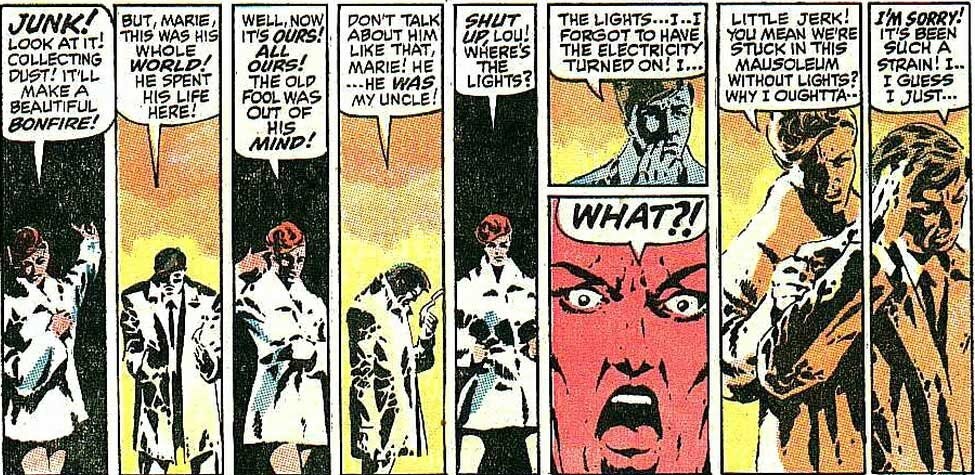
If anyone wants to learn more about film noir then I recommend Film Noir, published by Taschen. It’s a beautiful, well-researched book.
Milton Caniff
Caniff’s influence on comics cannot be overstated. Caniff, Raymond and Foster are the real forefathers of American comics. They weren’t just influences, they were templates. You can clearly see Caniff’s influence on, amongst others, Will Eisner, Jack Kirby, John Romita, Alex Toth, Frank Robbins, Carmine Infantino, Jules Ffeiffer, Gil Kane, Bernie Krigstein and Johnny Craig. He had a global impact too, influencing Jean Giraud, Hugo Pratt, Jordi Bernet and on and on. He took Noel Sickles’ use of chiaroscuro to new levels on Terry and the Pirates and fused it to incredible storytelling. You can find a good biography of Caniff on Lambiek. I also recommend searching through The Comics Journal’s digital archive for material on Caniff. For instance, TCJ issue 108 from 1986 has a lengthy interview with him, which is well worth reading.
Caniff started Terry and the Pirates in 1934 for The Chicago Tribune-New York Daily News Syndicate, which gave him a readership of 30 million people. When Caniff was starting Steve Canyon, he was on the front cover of Time. Caniff was huge.

The Dragon Lady seems like the template for the femme fatale archetype of film noir, but was influenced by Joan Crawford, according to Caniff2. Caniff was hugely influenced by cinema. The character of Burma, the chorus girl with a heart of gold was also likely of huge influence and fits the noir archetype.
The death of Raven Sherman in TatP directly influenced the death of Gwen Stacy in Spider-Man, according to John Romita, a famous example of the impact that the strip had on comic books. Caniff’s influence extended beyond comics, as he said, ‘After Citizen Kane, for instance, I got letters from Orson Welles. And so on, and so it goes.’3 Movies influenced Caniff and, in turn, Caniff influenced movies.
Noel Sickles had a profound influence on Caniff, not just with regard to chiaroscuro. Sickles said, ‘Milt and I had a studio together […] We faced each other. I had a board and he had a board and we had to work…’ 4 Sickles ghosted Caniff on TatP when the latter was sick, on at least one occasion. Sickles would become possibly the most important influence on Alex Toth (who would also be influenced by Caniff).
Alex Grand, in his excellent book Understanding Superhero Comic Books, notes that, ‘Caniff pioneered important storytelling techniques for long-form adventure comic strips, also utilised by later comic book creators, that depicted the human condition by ageing characters in real time and emphasising sexual tension, female empowerment, social awareness, death of a reoccurring character, artistic innovations, war, romance, and the realism of everyday struggles.’5
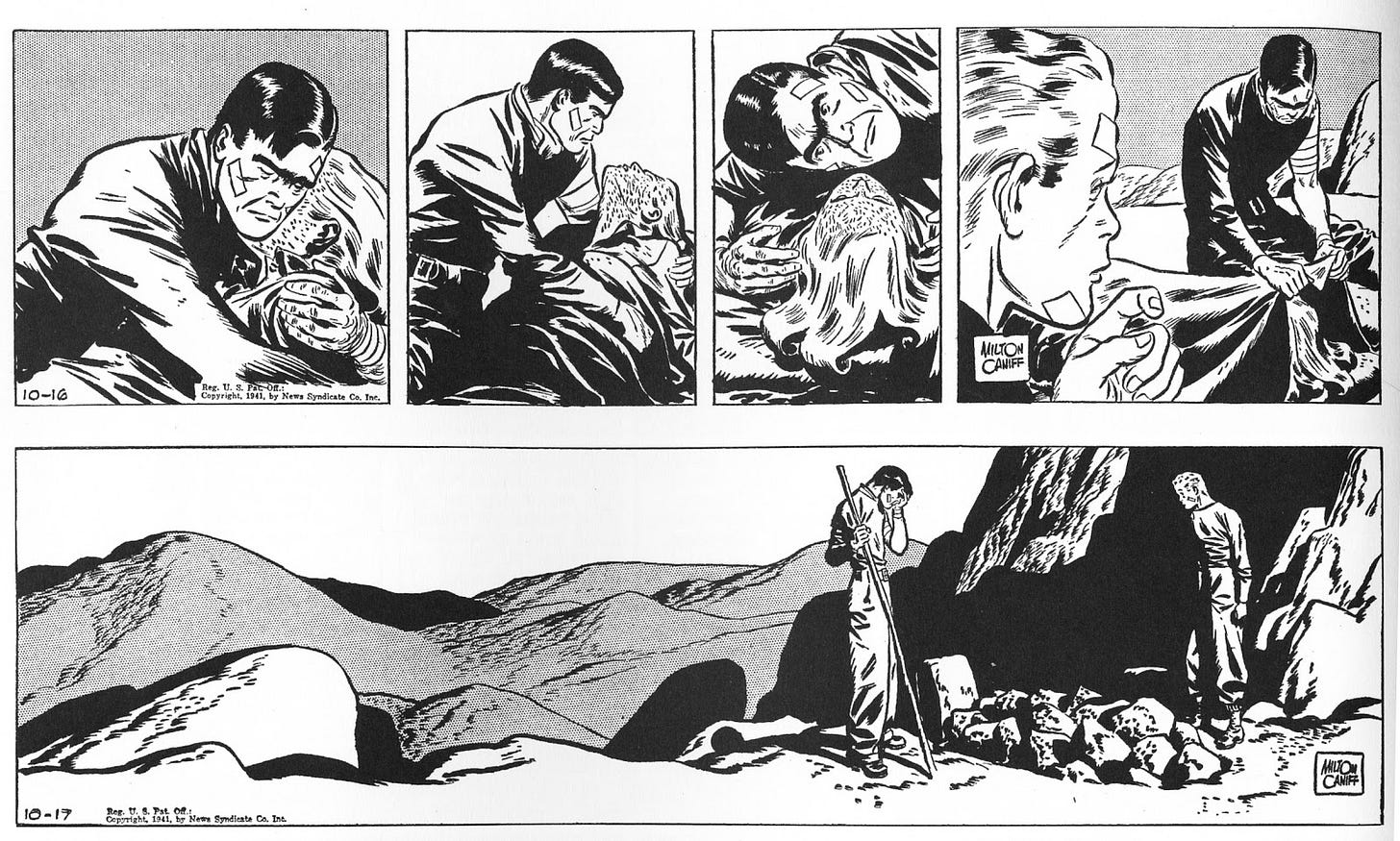
There’s another key influence. Milton Caniff, Noel Sickles, Roy Crane and Alex Toth all took the Landon School of Illustration and Cartooning correspondence course, with Sickles noting, ‘I didn’t meet a single cartoonist, from that early period up until probably 1950 or something [who hadn’t taken the course]. I’ve met a great many who have taken this course’6.
Thus, Charles N. Landon should also be recognised as someone who massively informed the evolution of comics art. (Incidentally, the equally, if not more so, influential Famous Artists Course is in the public domain and can be found here.)
Leonard Starr, who drew Mary Perkins on Stage and Annie (and lead writer on Thundercats, true believers!) , said of Terry and the Pirates, ‘Nothing done since has been done any better. Those following in Milton’s footsteps could only hope to do it as well… However many of us do story strips, now or in the future, Milton Caniff is our teacher’. 7
Recommend Reading
Terry and the Pirates 1941 - 1942, The Library of American Comics
Caniff: A Visual Biography, edited by Dean Mullaney, IDW
Johnny Craig
There’s again a pretty good biography of Craig on Lambiek, which really is a fantastic comics resource. Craig is probably best known for the work he did for EC Comics in the 1950s amongst a stable of artists that included Harvey Kurtzman, Wallace Wood, Will Elder, Al Williamson, Frank Frazetta, Jack Kamen, Jack Davis, Bernie Krigstein, Joe Orlando, Roy Krenkel, Graham Ingels, Reed Crandall and John Severin. Joe Kubert and Alex Toth did a couple of stories memorably, too. Despite that murderers’ row of talent, Craig still stood out. He had an incredibly clean line, somehow crisper than Russ Manning’s, for instance. He was also infamous for being very slow.
He drew some of the most notorious comic covers ever - covers that were cited by Frederic Wertham’s (epistemologically and methodologically weak) Seduction of the Innocent that led to a Senate-endorsed moral panic founded on an empirically unproven causal relationship between juvenile delinquency and comics. This led to the subsequent creation of the Comics Code Authority, which immediately neutered crime and horror comics. EC initially tried to mitigate this dilution of content with the picto-fiction titles, but soon went all in on humour, with Mad.
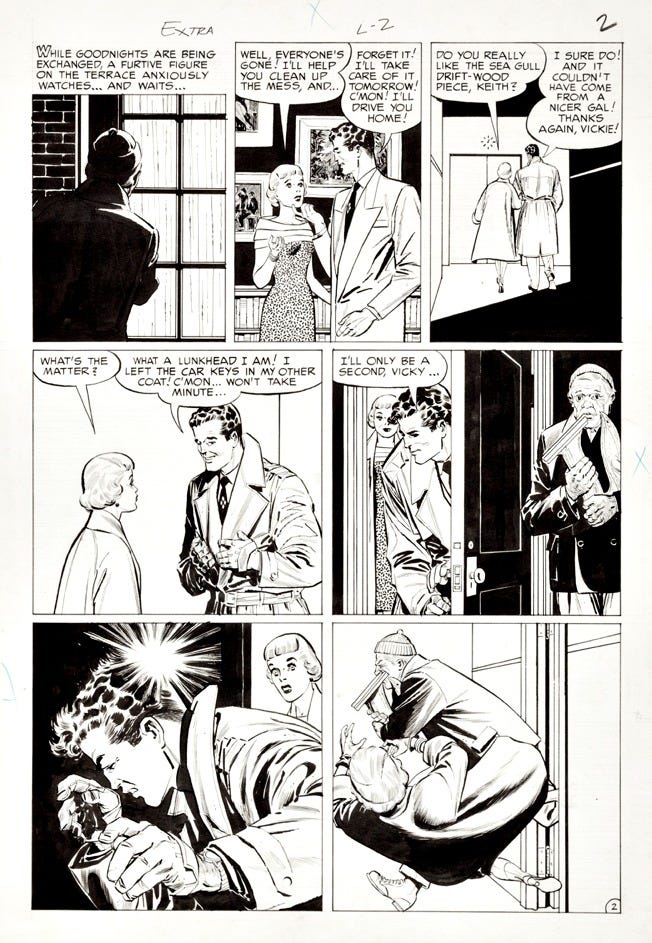
More than anything, Craig was a superb cartoonist. He was a great writer, fantastic artist and great storyteller. His work has a wonderful balance on the page, with impressive use of lighting and a hysterical presentation of emotion at odds with his clean line. The Sewer, Touch and Go!, Whirlpool and Split Personality are particularly incredible comics. I can see influences of Will Eisner and Milton Caniff in his work, but there’s the even stronger influence of the noir films of the 40s and 50s, such as The Postman Always Rings Twice, Double Indemnity or In a Lonely Place. He seemed more interested in morality plays than gumshoes.
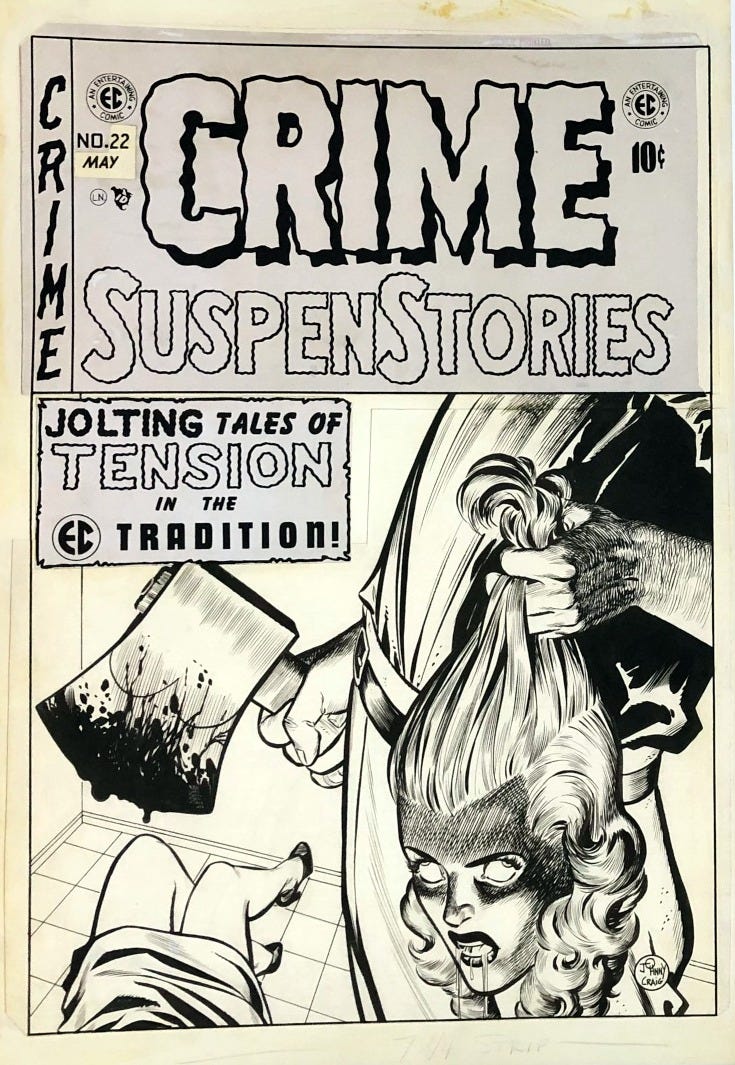
On that note, Max Allan Collins wrote of Craig, ‘What separates Craig from other EC luminaries is his ability to write the stories he drew […] His roots were primarily the higher ranks of crime-fiction writers - specifically, James M. Cain, Cornell Woolwich, and Roald Dahl - and the mainstream radio programmes […] as opposed to the pulps’.8
Recommended Reading
The Best of EC Stories Artisan Edition, IDW
Fall Guy for Murder and Other Stories, Fantagraphics
Deadly Beloved and Other Stories, Fantagraphics
Voodoo Vengeance and Other Stories, Fantagraphics
A Reader’s Question
Following my previous newsletter Matt asked if I could share some more about the process for designing and drawing covers. (Matt’s question can be found here.)





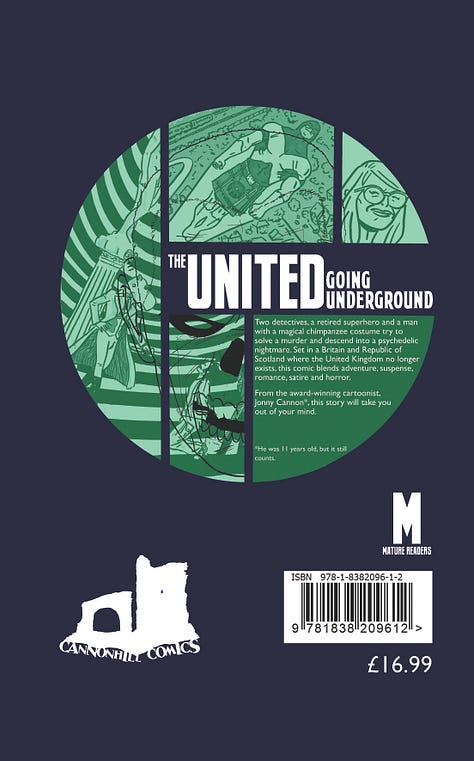
The above images show my process for designing and drawing the back cover of The United: Going Underground, from the initial rough to the final version. Starting from the top left and going clockwise:
I clearly drew this while I was meant to be doing work at my actual day job and the circle design just reflected my obsession with curved lines. I wanted it to show some of the interior art, particularly as the front cover was very much design-led rather than telling a story.
I marked out the layout for the circle using a technical pen, probably a .8 for a chunkier line.
I pencilled Jimmy Pilgrim’s face on tracing paper so that I could lay it over the circle. I was probably still up in the air whether or not I was going to physically redraw panels or do it digitally.
I inked Jimmy’s face and lined everything up. The idea for laying this over the other images came from Twin Peaks: The Return.
I scanned in the hand-drawn images and digitally added lettering, colours and panel insets. I exploded the circle pieces to give it a stronger design.
For the final version, I darkened the blue. Funnly enough, the original colour scheme for the book was purple and green - the traditional colours for villains in 1960s American comics. I changed the purple to a dark blue to really make the white lettering pop.
Overall, I was (and still am) very happy with how this came out. Somewhere along the line I’ve developed a decent sense of graphic design. This is down to learning from Gavin Boyle and Helen O’Neill, hours of studying books on the subject and critically examining comic covers.
Next Time!
I’ll write a bit about character design, so expect more obsessive ranting on Alex Toth.
Wallace Wood and Joe Maneely were meant to be additional pillars of the first Marvel wave of artists, i.e. Jack Kirby and Steve Ditko, but weren’t for wildly contrasting reasons.
https://www.nytimes.com/1988/04/04/obituaries/milton-caniff-81-creator-of-steve-canyon-dies.html
From TCJ 108 (1986).
From Sparring with Gil Kane: Debating the History and Aesthetics of Comics, edited by Gary Groth, Fantagraphics, p. 153.
Understanding Superhero Comic Books: A History of Key Elements, Creators, Events and Controversies, McFarland and Company, pp. 34 - 35.
From Sparring with Gil Kane, p. 155.
From Caniff: A Visual Biography, edited by Dean Mullaney, IDW, p. 115.
From the introduction to Deadly Beloved and Other Stories, Fantagraphics, pp. vi - viii.

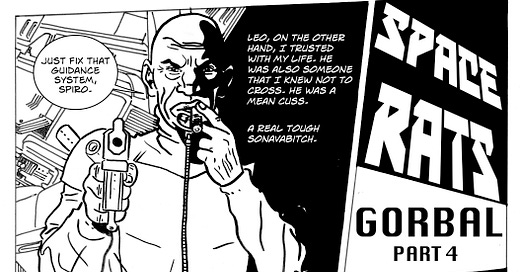



Hey, thanks for sharing that process with us. I will stop and look at a cover and think that looks awesome, but never really think about the huge amount of deliberation and design that goes into them. I guess the best ones don’t pull you out of the moment. Thanks, Jonny.
Interesting read, Johnny. You mentioned Jordi Bernet. Have you read any of the 'Torpedo' books? I believe your boy, Toth had a hand in the earliest iteration of the character.